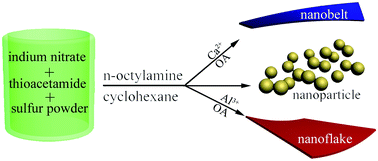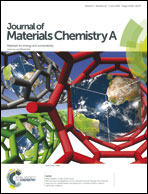Ultrathin two-dimensional β-In2S3 nanocrystals: oriented-attachment growth controlled by metal ions and photoelectrochemical properties†
Abstract
Ultrathin two-dimensional (2D) semiconductor nanocrystals have attracted much attention of late due to their attractive functional properties. Concurrently, oriented-attachment (OA) growth has been considered as an important growth theory for the construction of various nanocrystals, especially ultrathin 2D nanocrystals. However, all the OA growth procedures reported in the preparation of nanocrystals have been driven by organic ligand molecules so far. In this paper, we report for the first time that a metal ion controlled OA growth to synthesize semiconductor nanocrystals: 2D β-In2S3 nanobelts and nanoflakes with ∼2 nm thickness can be achieved via OA controlled by Ca2+ and Al3+, respectively. Note that Ca2+ and Al3+ are not incorporated into the crystal lattice structure of β-In2S3. β-In2S3 nanobelts and nanoflakes show step-like absorptions in UV-visible spectra. Furthermore, β-In2S3 nanoflakes exhibit the most outstanding photoelectrochemical activity when compared with β-In2S3 nanoparticles and nanobelts.

- This article is part of the themed collection: 2015 Journal of Materials Chemistry A Hot Papers

 Please wait while we load your content...
Please wait while we load your content...